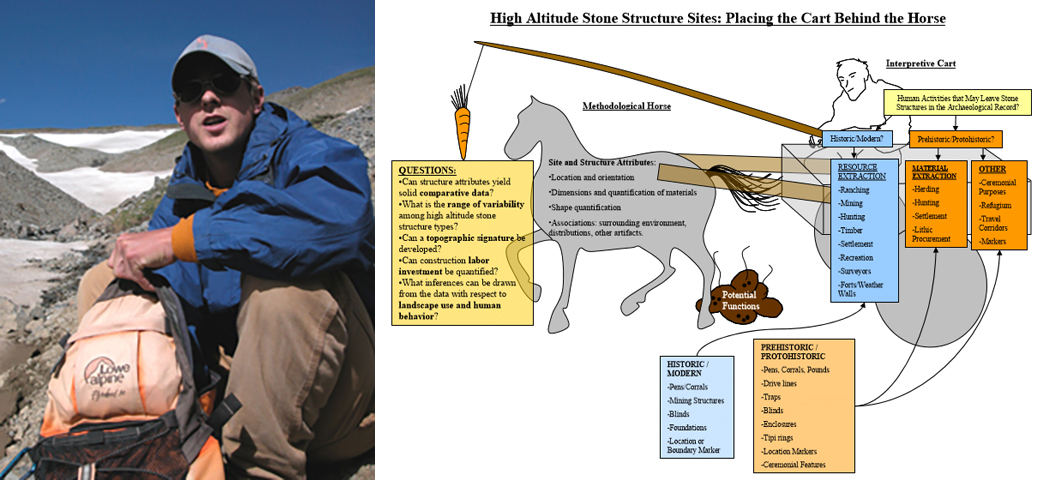HIGH ALTITUDE STONE AND WOOD STRUCTURES OF NORTHWESTERN WYOMING: EXAMPLES FROM THE UPPER GREYBULL RIVER AREA IN THE CENTRAL ABSAROKA MOUNTAINS
Click Thesis title to open fulltext pdf version of complete thesis
ABSTRACT OF THESIS
This thesis presents the results of archaeological investigations of seven sites with structures identified near the headwaters of the Greybull River in the Absaroka Mountains of northwestern Wyoming. These structures have in common a construction style that consists entirely of dry-laid and/or aligned locally available stone and, in some cases, wooden elements. Investigations, analyses and interpretations of high altitude stone structure sites are often framed by categorical assumptions about site and structure functions.
Assumed functions often include game drives, ceremonial localities, location markers, architectural remnants, and windbreaks. These ascribed functions condition the types of data that are gathered, and thus the results of the analyses and interpretations are often self-fulfilling. No single, best, or functionally provable argument, beyond a possible association with hunting, will be provided for the newly presented sites and structures, as too little is known about the builders’ cultural and/or temporal affiliations. Rather,
conclusions with respect to site and/or structure function will be oriented around pattern recognition and comparative discussion.
An important goal of this thesis is to explore analytical approaches that can be employed regardless of site and/or structure functions, and to this end, three analytical approaches are considered. First, a regional comparison of sites with similar features is presented. Second, data gathered from a structure replication
experiment are compared with data collected during field investigations to derive estimates of labor investment for the archaeological specimens. Third, landscape data are used to explore potential topographic signatures that might accompany sites high altitude sites with stone and wood structures. Although the functions of these structures remain unknown, the results of the research suggest that there are some baseline regional patterns in structure placement that should be further investigated. Prehistoric groups were expending energy in high elevation settings for activities that may not have been strictly hunting related. Finally, landscape data do show potential for exposing patterns of site placement with respect to high altitude stone and wood structures.
Christopher C. Kinneer. Anthropology Department, Colorado State University. Fort Collins, CO 80523. Fall 2007

